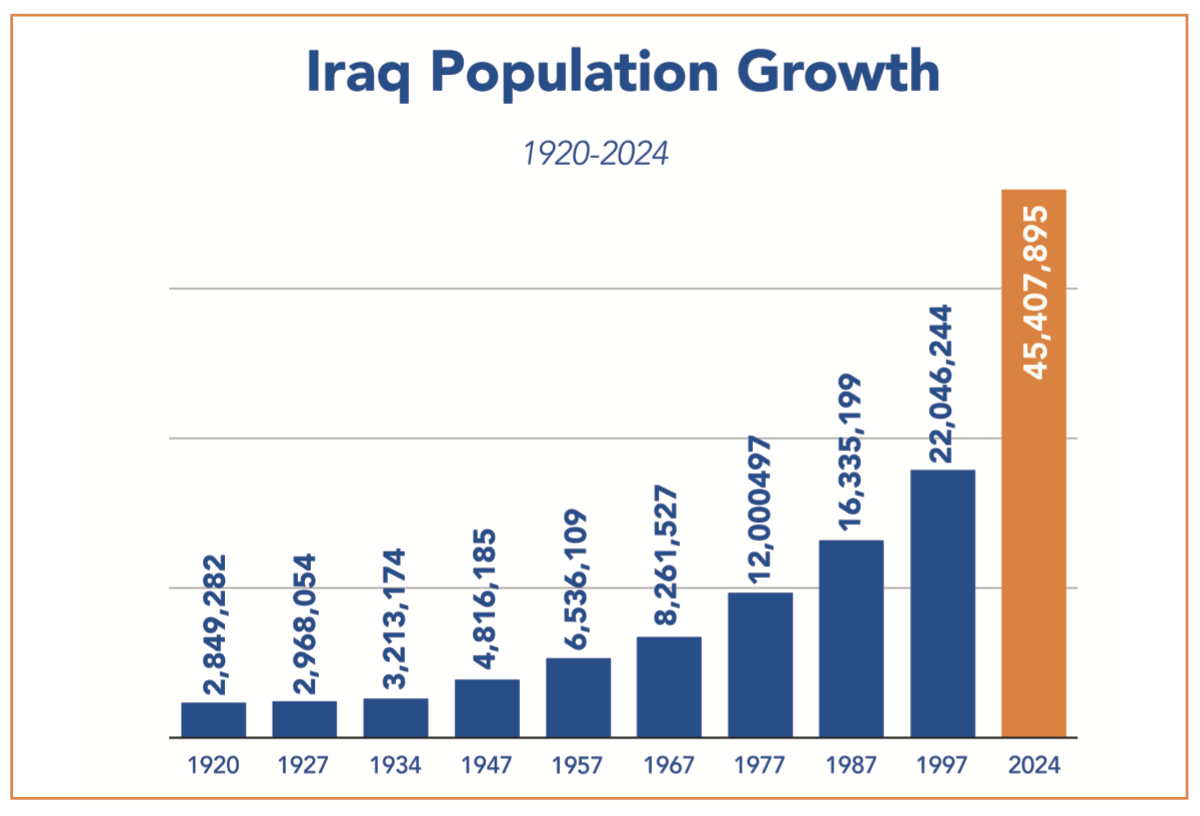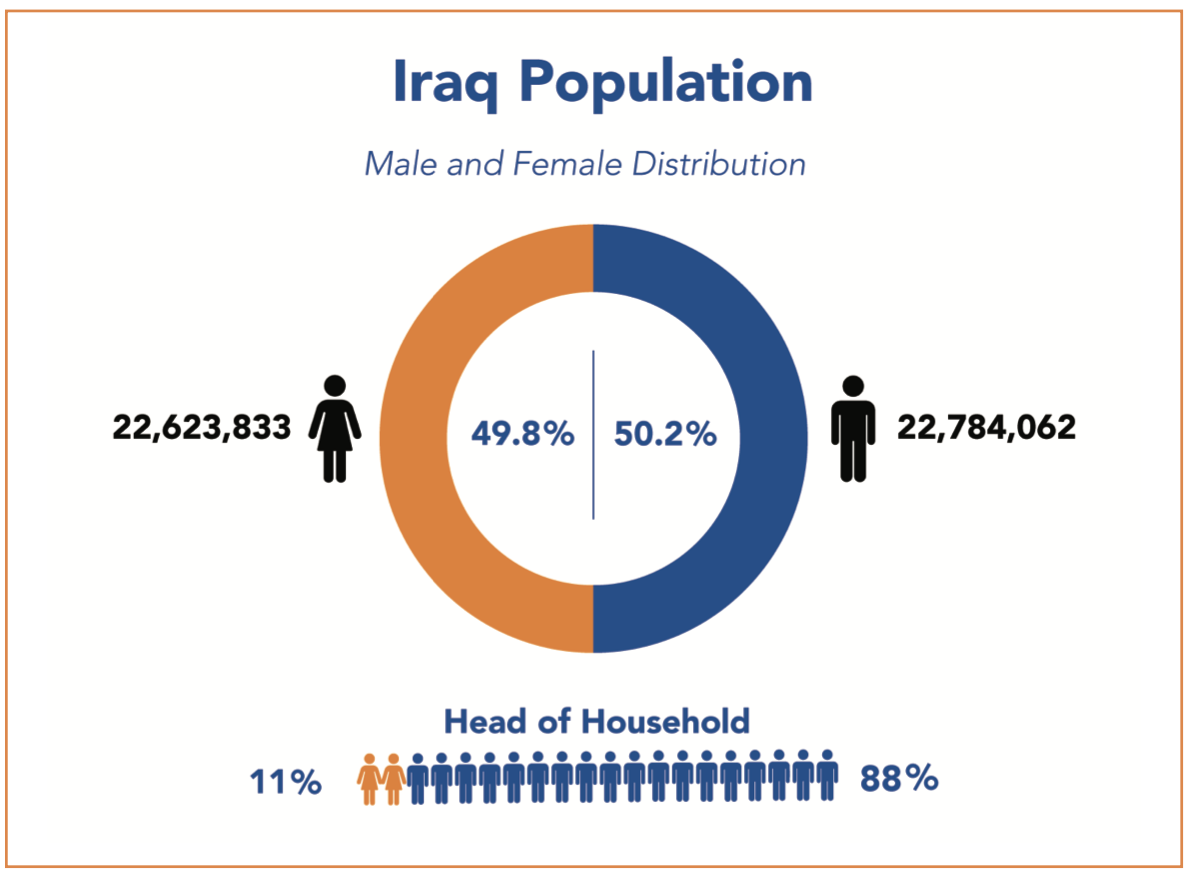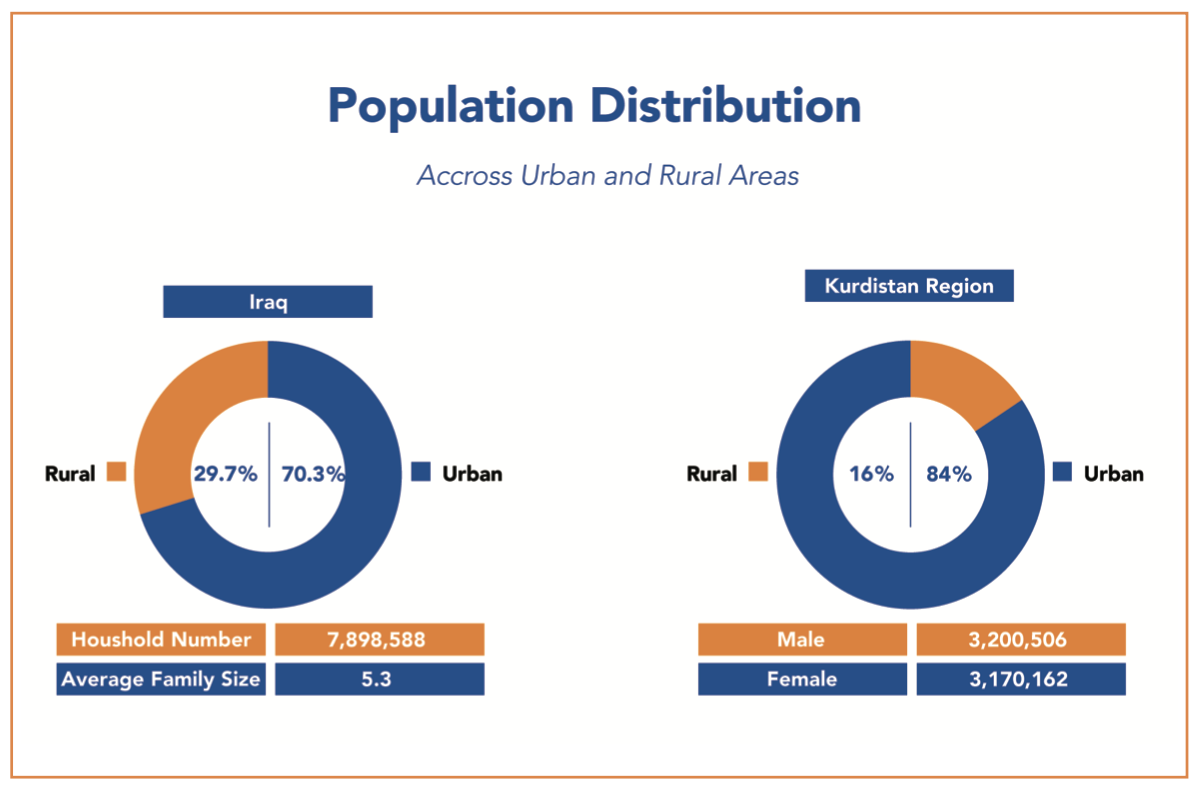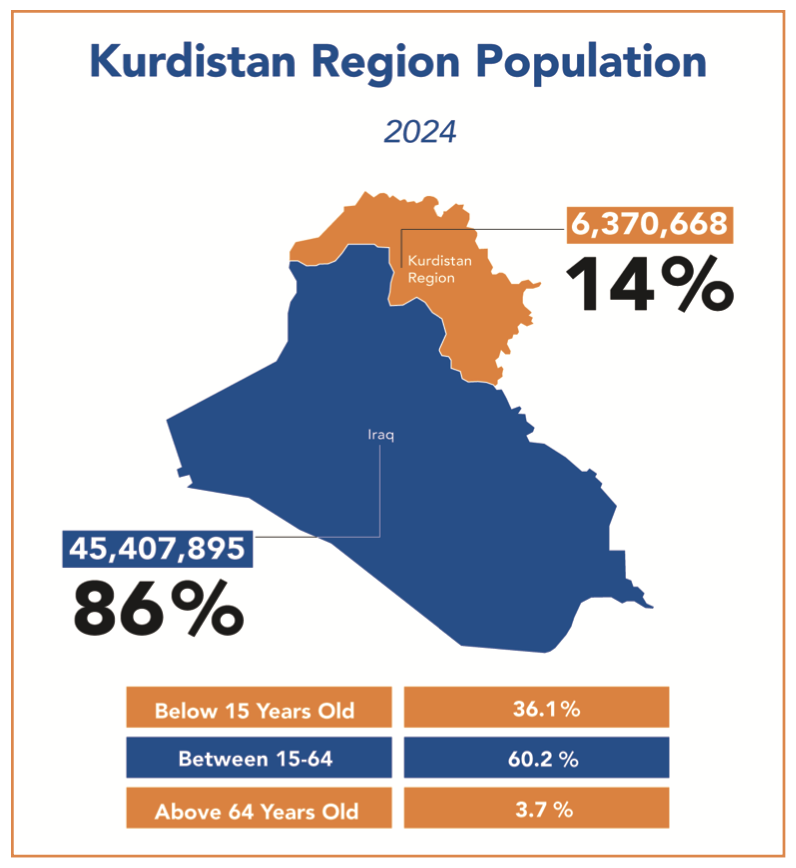The official Iraqi census conducted in November 2024 confirmed that the population of the Kurdistan Region has reached more than 6.37 million, which constitutes 14% of the population of Iraq.
Iraq conducted its last comprehensive census in 1987; since then, official federal government institutions have relied on estimated numbers and data collected from different entities such as the Ministry of Planning, the Ministry of Health, and the Ministry of Trade, which has created problems and inaccuracies.
After preparations and a few postponements, the federal government in cooperation with the Kurdistan Regional Government (KRG), conducted the census in November – the first in more than two decades after the fall of the former regime.
The latest census is the tenth to include all governorates since the creation of the post-colonial Iraqi state in 1921.

Breaking down the numbers
The head of the population census and statistics department at the Kurdistan Region Statistics Office, Guhdar Mohammed, told Kurdistan Chronicle that the initial results of the census conducted last month showed that the population of the Kurdistan Region had reached 6,370,668 people.
Mohammed pointed out that “1,379,163 households were registered, while the average family size is about 4.6 people, and the population growth rate is at 2.8%,” and added that “the number of males reached 3,200,506, or 50.24% of the total population, while the number of females was 3,170,162, or 49.76%.
He also stated that “the percentage of urban residents reached 84%, while the percentage of residents in rural areas was 16%.” Meanwhile, the census showed that the Kurdistan Region has 2,028,037 housing units.
In terms of the head of households, census data shows that families headed by women constitute 11.86% of the total, while families headed by men amounted to 88.14%.

Displaced Kurds return to their hometowns
According to Mohammed, there has been a decrease in the official population figures of the Kurdistan Region because the census did not include the population of disputed Kurdish territories.
These areas include parts of the Shekhan district, the Faida sub-district of the Simele district in Dohuk Governorate, the Makhmur district in Erbil, and the Koks and Nogol districts in Sulaymaniyah Governorate, along with many villages affiliated with the Chamchamal district.
Mohammed also referred to “the return of large numbers of residents of the Kurdistan Region to their original areas within the disputed territories, as defined by Article 140 of the Constitution and that including the Kirkuk and Saladin Governorates, and the Makhmur district, as well as other districts and areas.”
Prior to the census, the Kurdistan Region Statistics Office estimated that the population of the region included more than 6.69 million people, excluding internally displaced persons (IDPs) and refugees.
The KRG’s latest reports indicate that there are 962,000 IDPs and refugees in the region, consisting of 680,000 IDPs and 282,000 refugees, 263,000 of whom are Syrians.

Increase in budget and share of seats in parliament
According to the preliminary results of the national census, the Kurdistan Region’s population is 14% of the total population of Iraq. This result refuted the allegations of the federal government that its share of the budget should be 12.6% only – a figure produced prior to the collection of official census data. This percentage was officiated for the region’s share of the federal budget for the fiscal years 2023, 2024, and 2025.
“The budget is calculated based on data from the federal ministries of planning and trade,” Mohammed notes. Thus, the percentage will change in upcoming budgets to 14% based on the results of the general population census, which will also apply to the share of the number of seats in the federal parliament.
In total, based on the Kurdistan Statistics Office’s calculations, the percentage of the budget should be more than 14%, if the disputed areas were included.
Regarding the population growth in the Kurdistan Region compared to the rest of Iraq, Mohammed seemed concerned and urged for “developing plans and programs to encourage young people to marry and bear more children.” He believes that “the economic and social conditions and openness to the world have had an impact on changing the view of young people and married couples toward having fewer children, and many of them are satisfied with smaller families, which has led to a decrease in the number of members per family.”

A young population
The recent census also uncovered many interesting figures related to the Kurdistan Region’s large youth population. This data can help provide services and resources based on the needs of the population. Additionally, it is significant for the formation of both healthcare and economic policy and can help in developing roadmaps for a better future.
According to the initial results of the census, the Kurdistan Region recorded a high percentage of young people of working age.
Some 63.7% of the region’s population is of working age; in the field of statistics, the youth population of a country measuring at least 60% of the total is considered a positive indicator of economic growth potential.
Mohammed stated that “the region’s percentage of young people exceeds that of the rest of Iraq, and it reached the window required by statistics in 2021.” This allows the government to develop plans to benefit from its youth and employ them in a better way to harness their productive capacities.
The census shows that the population of Iraq is 45,407,895 people, including foreigners and refugees. The percentage of females reached 49.8% of the population, while the percentage of males reached 50.1%.
The percentage of the population of working age – that is, between the ages of 15 and 64 – is 60.2% for all of Iraq.
According to the results, the family size in Iraq reached 5.3 individuals, while the annual population growth rate was at 2.3%.
The census may provide more accurate figures than were previously used, but there are many unresolved issues relating to the disputed areas, displaced Iraqis, and Iraqis in the diaspora, many of whom have fled or migrated due to lack of reconciliation or critical services, political matters, social unrest, climate change and sectarianism, leading to demographic changes across the war-torn country.
Hemin Baban is a Kurdish journalist who has worked for a number of local and international media institutions.